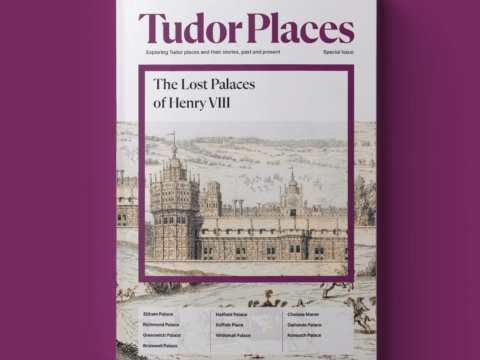'You Seem All My Pleasure': The Lennox Jewel
by Alison Weir
A Symbol of Love and Political Ambition
Chapter 1: What is the Lennox Jewel?
The famous Lennox, or Darnley, Jewel, in the Royal Collection at the Palace of Holyroodhouse is a tribute to one of the Tudor age’s most successful royal marriages.
Henry VIII’s niece, Lady Margaret Douglas, was born in 1515. She suffered a turbulent childhood in Scotland, and was brought to Henry VIII’s court in 1530. There she served as lady of honour first to the King’s daughter, the Princess Mary, then to Anne Boleyn and all Henry’s subsequent wives. Margaret was a great beauty and ‘highly esteemed’, and of a feisty, adventurous, passionate temperament. A noted poet, she twice courted scandal and punishment by romantically involving herself with unsuitable men. Yet on both occasions she recovered the King’s favour, and was treated as a princess at his court. In 1544 she was married to Matthew Stuart, Earl of Lennox, a prominent French-educated Scottish nobleman of royal descent. It was a political alliance that turned into a love match.
The Lennox Jewel, a richly enamelled, intricate pendant locket in the shape of a heart, has been dated to the 1560s, and the complex symbols that adorn it suggest that it was commissioned by Lennox around 1564-5 for ‘my Madge’, as he called his beloved wife. It is not known where the Jewel was made, but it has been suggested that it came from Edinburgh, where Lennox was staying at the time.
In 1564 Margaret and Matthew – or ‘Mathieu’, as he signed himself - had been married for twenty years. Heart jewels, it has been pointed out, were invariably gifts between lovers or married couples. The detailed imagery on the Jewel relates very personally to the love and devotion between the Lennoxes and to their dynastic aspirations, and it was made at a time when they were within reach of achieving the imminent fruition of their hopes. That imagery is as much of a key to understanding their relationship and political aspirations as the loving letters they exchanged.
The Lennox Jewel is mired in controversy. Some have suggested that it was of considerable significance in Margaret’s secret marriage negotiations for the marriage of her and Lennox’s elder son, Henry Stuart, Lord Darnley, to Mary, Queen of Scots, and even that it contained coded symbols that would convey to Lennox, then in Edinburgh, plans that were too dangerous for Margaret to entrust to a letter or messenger. Secrecy was necessary because Queen Elizabeth I, whose subject Darnley was, had made her opposition to the marriage plain. Margaret Douglas was the daughter of Henry VIII’s sister, Margaret Tudor, and the granddaughter of Henry VII, and had been born in England, as had her son: both had good claims to the throne, too close for Queen Elizabeth’s comfort, not least because the marriage of Darnley and the Queen of Scots would unite two dangerous Catholic claimants, with a view to uniting the two kingdoms under Stuart rule.
It has also been asserted that the Lennox Jewel was commissioned by Margaret as a memento mori of her husband, and dates from after his death in a bloody ambush at Stirling in 1571. But historians have cast credible doubt on that, as the Jewel contains no memorials to him or any reference to his assassination.






